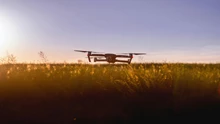
Researchers have discovered a process known as artificial photosynthesis that may eliminate the requirement for biological photosynthesis and produce food without the use of natural sunlight. The research was published in "Nature Food," an online publication that publishes research, reviews, and comments on all areas of food production, and it appears to be positive for the planet's future.
What is Artificial Photosynthesis?
Artificial photosynthesis is a biological reaction in which plants and certain other creatures use sunlight, water, and carbon dioxide to generate oxygen and energy in the form of sugar.
An enzyme bed reactor is used in an artificial photosynthesis system to regulate carbon dioxide levels in the atmosphere. This can likewise be accomplished by any other source that involves the removal of carbon dioxide from the atmosphere.
Hydrogen energy and biochemical transducers power this enzyme reactor. Hydrogen energy generates energy from hydrogen or hydrogen-containing molecules, which are subsequently distributed to all practical purposes with great energy efficiency.
Other crucial elements of a cumulative artificial photosynthesis framework include PV panels, which meet the system's electrical requirements and help generate electricity and dry agriculture in the form of carbohydrates, liquid fuels, chemical feedstock, and polymers for fiber manufacture, and hydrogen production, which is accomplished through electrochemical water dissociation into hydrogen and oxygen by mimicking photosynthesis.
How Can Artificial Photosynthesis Help to Overcome Climate Change?
Droughts, floods, and decreasing land availability pose less of a danger to global food security since crops for people and animals may be produced in less resource-intensive, regulated conditions. Crops might also be produced in regions where land is now unsuitable for agriculture.
Using artificial photosynthesis to create food might represent a fundamental change in how we feed people. By increasing the efficiency of food production, less land is required, reducing the environmental effect of agriculture. And for agriculture in non-traditional situations, such as outer space, better energy efficiency might help feed more crew members with fewer inputs.











